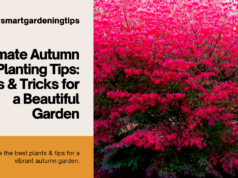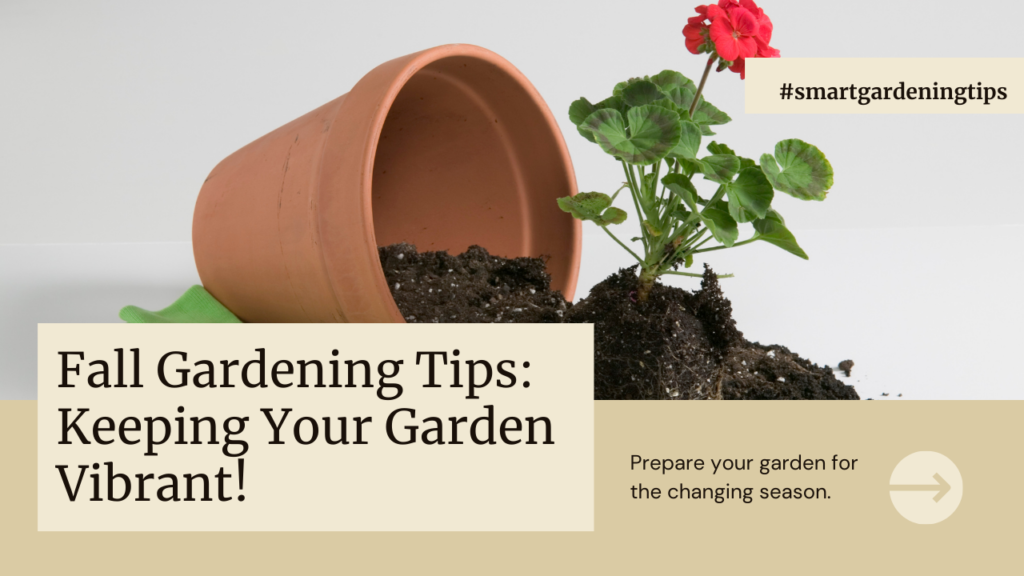
As the summer days come to an end, it’s time to start preparing your garden for the fall season. Taking the necessary steps now will ensure that your garden remains healthy and vibrant throughout the colder months. In this article, we will provide you with essential fall garden maintenance tips to help you get started.
Key Takeaways:
- Start preparing your garden for the fall season to ensure its health and vibrancy.
- Follow essential fall garden maintenance tips to keep your plants thriving.
- Take steps to protect your garden from the harsh cold weather.
- Clean up your garden and prune plants to prepare them for winter.
- Consider testing and amending your soil for improved plant health in the fall.
Planting Fall Flowers and Vegetables
Experience the beauty of autumn in your garden by planting stunning fall flowers and delicious vegetables. In this section, we will share the best practices for planting fall flowers and vegetables and help you choose the right plants for your fall gardening endeavors. Get ready to create a vibrant and thriving autumn oasis!
Choosing the Right Plants for Fall Gardening
When selecting plants for your fall garden, it’s important to consider their tolerance to cooler temperatures and shorter daylight hours. Opt for plants that thrive in these conditions, ensuring they can withstand the changing weather.
Here are some popular options for fall flowers:
- Pansies: These colorful blooms add a cheerful touch to any fall garden. They can withstand mild frosts and colder temperatures, making them an ideal choice.
- Chrysanthemums: Known for their vibrant hues, chrysanthemums are excellent choices for fall. Choose varieties that bloom late in the season for a longer-lasting display.
- Ornamental Cabbage and Kale: These unique plants feature attractive foliage in shades of purple, green, and white. They offer a beautiful contrast to traditional fall flowers.
To ensure a bountiful harvest of vegetables in the fall, consider these options:
- Broccoli: This nutritious vegetable thrives in cooler temperatures and can be harvested well into the fall.
- Carrots: Known for their sweet flavor, carrots can be planted in late summer for a fall harvest. They can withstand light frosts, making them a reliable choice.
- Kale: Packed with nutrients, kale is a cold-hardy vegetable that is perfect for fall gardening. It can handle frost and even become sweeter after exposure to cold temperatures.
Planting Fall Flowers and Vegetables
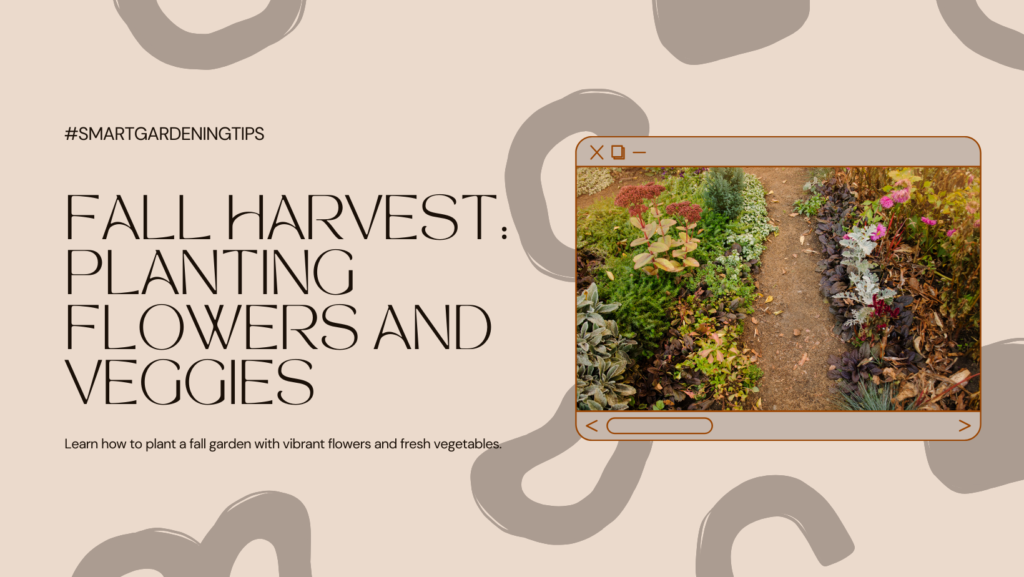
When it comes to planting fall flowers and vegetables, timing is crucial. Aim to plant them in late summer or early fall, allowing enough time for the roots to establish before the colder weather sets in.
Follow these steps for successful planting:
- Prepare the soil: Ensure your soil is well-draining and rich in organic matter. Add compost or aged manure to improve fertility.
- Clear the area: Remove any weeds or debris from the planting area to create a clean and healthy space for your plants.
- Make holes: Dig holes for your plants, ensuring they are deep and wide enough to accommodate the roots.
- Plant your flowers or vegetables: Place your plants in the holes, making sure the roots are covered with soil. Gently firm the soil around the plants.
- Water thoroughly: After planting, give your plants a good watering to help them settle in and establish their roots.
Remember to provide regular care and maintenance to your fall flowers and vegetables. Water them deeply, especially during dry periods, and protect them from pests and diseases.
Now that you have the knowledge and guidance for planting fall flowers and vegetables, it’s time to get started on your autumn garden. Create a stunning outdoor space with an array of colorful blooms and delicious harvests. Enjoy the beauty and abundance of fall!
Soil and Fertilizing Tips for Fall Gardening
As the fall season approaches, it’s essential to ensure that your soil is prepared and your plants are well-nourished for optimal growth. By testing and amending your soil, you can create the perfect environment for your fall plants to thrive. Additionally, selecting the right fertilizer will provide them with the necessary nutrients for healthy development.
Testing and Amending Soil in the Fall
Before planting your fall garden, it’s crucial to test your soil to determine its nutrient levels and pH balance. Testing and amending soil in the fall allows you to make any necessary adjustments to improve its fertility and overall health. Here are some key steps to follow:
- Start by collecting soil samples from different areas of your garden.
- Send the soil samples to a reputable laboratory for analysis or use a home test kit for quick results.
- Based on the test results, you can amend your soil by adding organic matter, such as compost or aged manure, to enhance its structure and nutrient content.
- Consider adjusting the pH level of your soil by adding lime to raise the pH or sulfur to lower it, depending on the specific requirements of your plants.
- Remember to thoroughly blend the amendments into the soil to ensure even distribution.
By taking the time to test and amend your soil in the fall, you can lay the foundation for a successful and thriving fall garden.
Choosing the Right Fertilizer for Fall Plants
Proper fertilization is crucial for supporting the growth and development of your fall plants. Choosing the right fertilizer for fall plants involves understanding the nutritional needs of your plants and selecting a product that provides balanced and targeted nourishment. Here are some tips:
- Look for fertilizers labeled specifically for fall or late-season use. These formulations are typically designed to meet the specific nutrient requirements of fall plants.
- Consider a slow-release fertilizer, which gradually releases nutrients over time, providing a steady supply of nourishment to your plants throughout the fall season.
- Ensure that the fertilizer you choose contains essential nutrients such as nitrogen (N), phosphorus (P), and potassium (K), which are vital for plant growth and overall health.
- Follow the manufacturer’s instructions regarding application rates and timing to ensure proper usage.
Remember, a well-fed plant is more resilient to pests and diseases and will reward you with vibrant foliage, bountiful blooms, and a successful fall garden.
Nutrient Requirements for Common Fall Plants
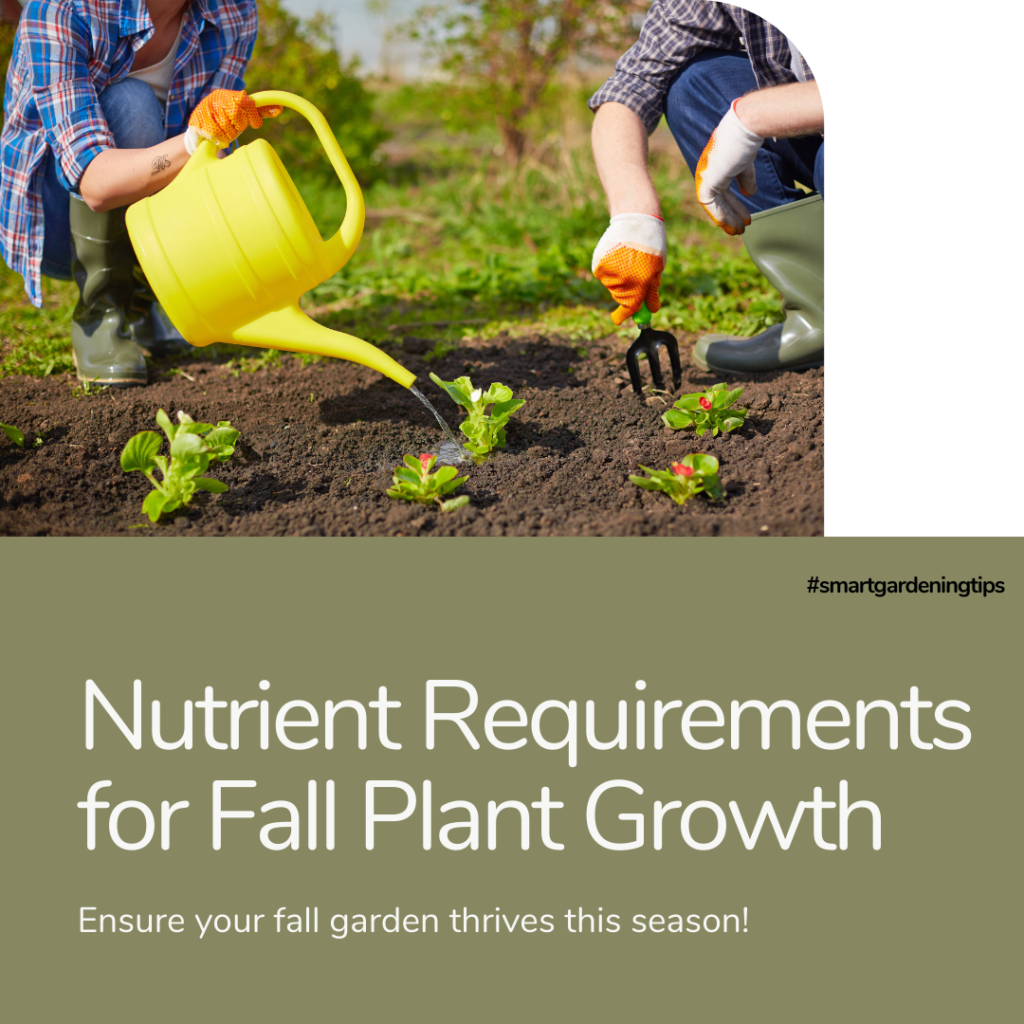
| Plant | Nitrogen (N) | Phosphorus (P) | Potassium (K) |
|---|---|---|---|
| Lettuce | High | Medium | High |
| Kale | High | High | High |
| Pansies | Medium | Medium | Low |
| Mums | Low | Medium | Medium |
Use this table as a guide to understand the nutrient requirements of common fall plants. Adjust your fertilizer choices accordingly to provide the optimal nourishment for each specific plant.
Protecting Plants from Cold Weather
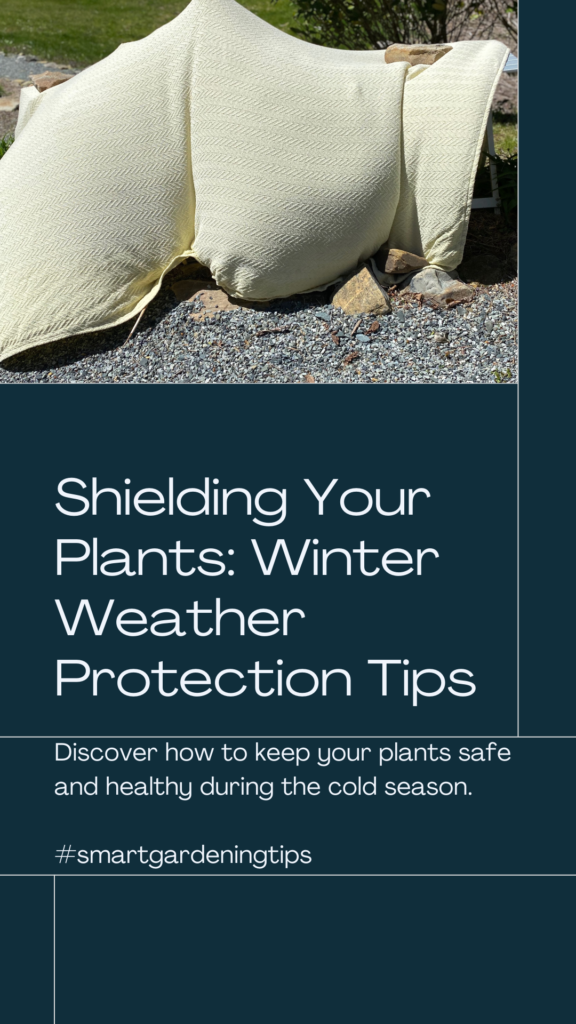
When the cold weather begins to set in, it’s essential to take steps to protect your plants from frost and ensure their survival through the winter months. By implementing effective strategies and utilizing mulch and covers, you can provide insulation to shield your plants from the harsh elements.
Using Mulch to Insulate Plants
One of the most effective ways to protect your plants from frost is by using mulch. Mulch acts as an insulating barrier, helping to regulate soil temperature, retain moisture, and prevent frost from penetrating the roots of your plants. For best results, follow these steps:
- Apply a generous layer of mulch around the base of each plant, extending the coverage to the drip line.
- Choose organic mulch, such as straw, leaves, or wood chips, which will gradually break down and enrich the soil.
- Ensure the mulch depth is at least 2-3 inches to provide proper insulation.
- Avoid piling mulch against the stem of the plants, as it can lead to rot and pest problems.
Using Covers for Extra Protection
In addition to mulch, you can also use covers to provide an extra layer of protection for your plants. Covers help trap heat and create a microclimate around the plants, shielding them from frost and freezing temperatures. Here are some strategies for using covers:
- Choose frost covers or cloths made from lightweight, breathable materials like burlap or frost blankets.
- Place covers over plants in the late afternoon or early evening before temperatures drop.
- Secure the covers to the ground using stakes or rocks to prevent them from blowing away in strong winds.
- Remove the covers during the day to allow the plants to receive sunlight and proper ventilation.
“By using mulch and covers, you not only provide insulation but also create a protective barrier around your plants, shielding them from frost and cold weather.” — Gardening Expert
Remember to monitor weather forecasts and be prepared to take action when frost is expected. By implementing these strategies and staying vigilant, you can protect your plants from the damaging effects of cold weather and ensure their survival.
| Covers | Mulch |
|---|---|
| Provides an extra layer of protection | Acts as an insulating barrier |
| Traps heat and creates a microclimate | Helps regulate soil temperature |
| Offers temporary protection during frost events | Provides long-term insulation |
| Requires regular monitoring and removal during the day | Requires minimal maintenance once applied |
Fall Garden Cleanup and Pruning
In preparation for the winter season, properly cleaning up your garden in the fall is essential. This not only helps to maintain a tidy and organized outdoor space but also sets the stage for a healthy garden next spring. Alongside cleaning, pruning and trimming your plants is a crucial task that promotes their growth and vitality during the winter months.
When it comes to fall garden cleanup, here are a few important tasks to prioritize:
Remove Debris
Start by removing any fallen leaves, dead plants, weeds, and other debris from your garden. This will prevent diseases, pests, and fungal infections from spreading, ensuring a healthy environment for your plants.
Clear Annuals and Vegetables
Once your annual flowers and vegetable plants have finished producing, remove them from the garden beds. This allows for better air circulation and reduces the risk of diseases or pests overwintering in the soil. Compost healthy plant material to enrich your soil for next season.
Prune Perennials
Pruning perennials is a vital step in promoting their overall health and reducing the risk of disease. Remove any dead or damaged stems and foliage, ensuring you follow proper pruning techniques for each specific plant. This will encourage new growth and strengthen the structure of your perennials.
Protect Your Tools
Before winter arrives, take the time to clean and store your gardening tools properly. Remove dirt and debris, sharpen blades, and apply a protective coating or oil to prevent rusting. Storing them in a dry and secure location will prolong their lifespan.
“Properly cleaning up your garden in the fall sets the stage for a healthy garden next spring.”
Now that we’ve covered the cleaning aspect of fall garden maintenance, let’s delve into the importance of pruning and trimming your plants for winter:
Winter Protection
Pruning and trimming your plants before winter helps them withstand the harsh weather conditions. By removing dead or weak branches, you reduce the risk of breakage due to heavy snow or ice accumulation.
Improved Plant Health
Pruning stimulates new growth and improves overall plant health. It allows for better air circulation, reducing the chances of disease and fungal infections. Additionally, removing excess branches and foliage directs the plant’s energy towards developing stronger roots, resulting in healthier growth in the following seasons.
Maintain Desired Shape and Size
Regular pruning ensures that your plants maintain their desired shape and size. By selectively removing branches, you can control the plant’s growth, create a more aesthetically pleasing appearance, and prevent overcrowding within your garden beds.
Remember to carefully research and follow specific pruning techniques for different plant species to avoid any damage or stunting of growth.
By properly cleaning up your garden in the fall and dedicating time to pruning and trimming, you are setting the foundation for a thriving garden next spring. Your plants will be healthier, more resilient, and prepared to flourish when the warmer temperatures arrive.
Ready to tackle fall garden cleanup and pruning? Check out the table below for a summary of the essential tasks and tools you’ll need:
| Fall Garden Cleanup Checklist |
|---|
| Remove debris |
| Clear annuals and vegetables |
| Prune perennials |
| Protect gardening tools |
Fall Planting and Transplanting Tips
When it comes to gardening in the fall, planting and transplanting are key activities for ensuring a beautiful and thriving garden. By following the best practices for planting and transplanting in the fall season, you can set your plants up for success and enjoy a stunning autumn landscape.
Whether you’re adding new plants to your garden or moving existing ones to different locations, there are some important considerations to keep in mind. Here are some expert tips to guide you through the process:
1. Choose the Right Plants
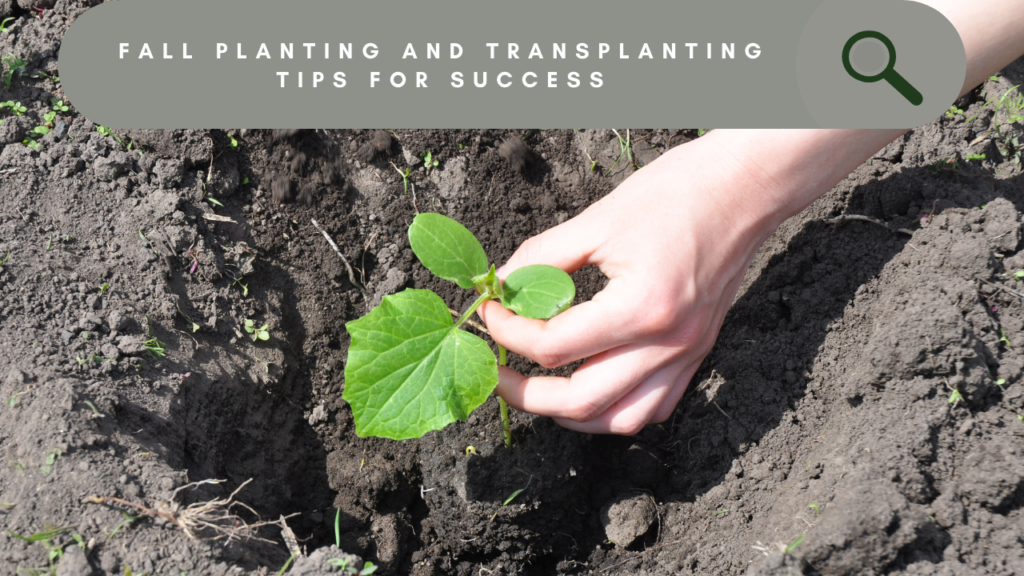
Selecting the right plants for your fall garden is essential. Opt for species that are suitable for the climate in your region and can withstand the cooler temperatures of the fall season. Consider plants like mums, pansies, and ornamental grasses that thrive in the fall and provide vibrant colors and textures to your garden.
2. Timing is Everything
Timing plays a crucial role in fall planting and transplanting. Aim to plant or transplant your flowers and vegetables at least six weeks before the first expected frost. This will give the plants enough time to establish their root systems before winter sets in.
3. Prepare the Soil
Before planting or transplanting, prepare the soil by clearing away any debris and weeds. Take the time to amend the soil with organic matter, such as compost or well-rotted manure, to improve its fertility and drainage. This will provide a nutrient-rich environment for your plants to thrive.
4. Dig Proper Holes
When planting or transplanting, it’s important to dig proper holes for your plants. Ensure that the holes are wide enough to accommodate the roots without crowding or bending them. The depth of the hole should be slightly deeper than the root ball to allow for proper root growth.
5. Water and Mulch
After planting or transplanting, water your plants thoroughly to help them settle in their new locations. Apply a layer of mulch around the base of the plants to conserve moisture, suppress weeds, and insulate the roots from temperature fluctuations.
6. Monitor and Maintain
Keep a close eye on your newly planted or transplanted plants throughout the fall season. Ensure they receive adequate water, especially during dry periods, and protect them from extreme weather conditions. Regularly check for signs of pests or diseases and take appropriate action to prevent damage.
By following these best practices for planting and transplanting in the fall, you can create a beautiful and resilient garden that will thrive throughout the season. Remember to consider the specific needs of each plant and provide the necessary care and attention to help them flourish.
Testing and Amending Soil in the Fall Season
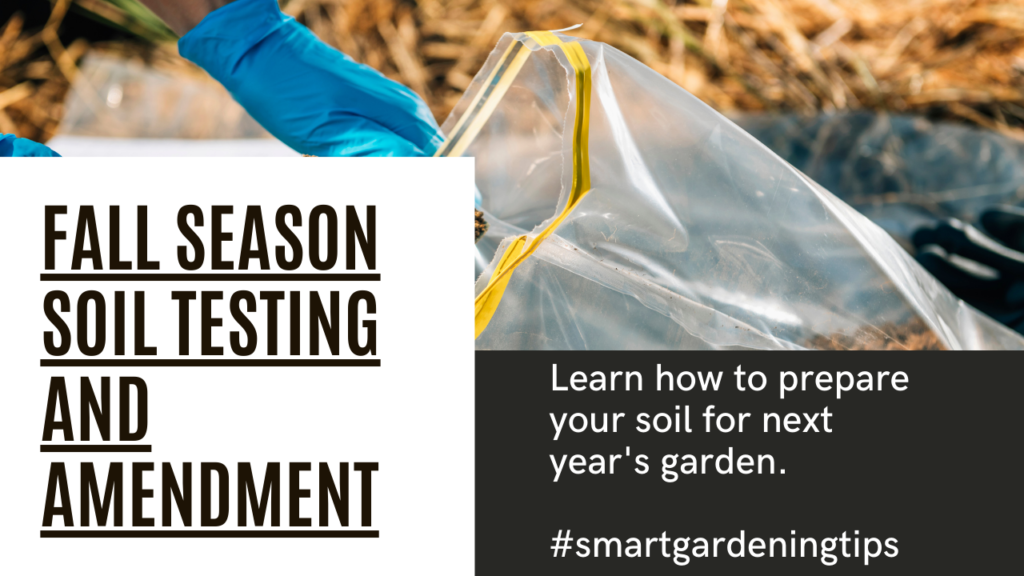
When it comes to fall gardening, one important aspect that shouldn’t be overlooked is testing and amending your soil. Testing the soil in the fall allows you to understand its composition and make any necessary adjustments to ensure the health and vitality of your garden.
So why is testing and amending soil in the fall so crucial? Well, as you know, plants rely on the soil for their nutrients, water, and support. By determining the pH level, nutrient content, and texture of your soil, you can tailor your gardening practices accordingly and create the ideal environment for your plants to thrive.
Importance of Soil Testing
Soil testing provides valuable insights into the quality of your soil. It helps identify any deficiencies or imbalances that may hinder plant growth and development. By evaluating the soil composition, you can take targeted steps to improve its fertility and overall health.
Testing your soil in the fall is particularly beneficial because it allows you to make amendments before winter sets in. By making necessary adjustments during this time, you give the soil enough time to incorporate the amendments and improve its structure, ensuring that your plants will have the nutrients they need when spring arrives.
Amending Soil in the Fall
Once you have the results of your soil test, you can determine the appropriate amendments for your garden. Common soil amendments include adding organic matter, adjusting pH levels, and addressing nutrient deficiencies.
Adding organic matter, such as compost or well-rotted manure, can improve soil structure, drainage, and nutrient availability. It replenishes essential nutrients and promotes beneficial microbial activity in the soil.
If your soil has a pH imbalance, you can take steps to correct it. For example, if the pH is too acidic, you can incorporate lime to raise the pH level. On the other hand, if the soil is alkaline, you can add sulfur or elemental sulfur to lower the pH.
Addressing nutrient deficiencies is another crucial aspect of soil amendment. Based on your soil test results, you can determine which nutrients are lacking and make appropriate additions. This ensures that your plants have access to the nutrients they need for optimal growth and development.
Remember, soil amendment is not a one-time task. It requires regular monitoring and adjustments to maintain the health of your garden. Continuous testing and amending will keep your soil in optimal condition for long-term gardening success.
Choosing the Right Fertilizer for Fall Plants
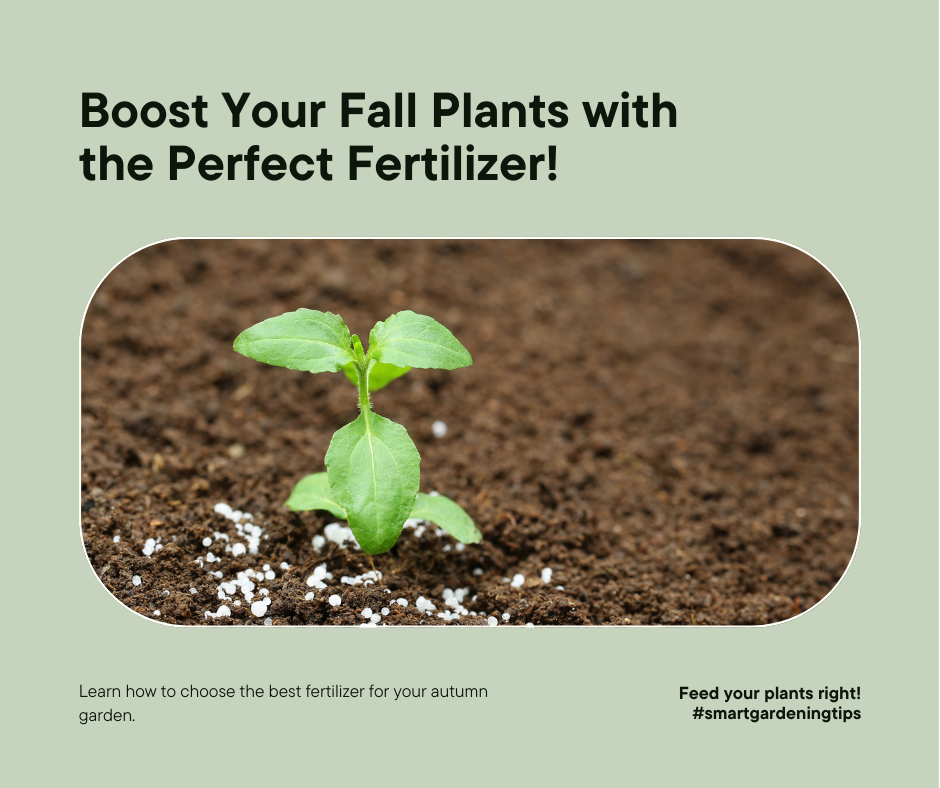
When it comes to fall gardening, choosing the right fertilizer for your plants is essential. By providing them with the proper nutrients, you can ensure their optimal growth and development. Here are some key factors to consider when selecting the correct fertilizer for your fall plants:
- Nutritional requirements: Different plants have varying nutritional needs. Before purchasing fertilizers, identify the specific nutrient requirements of your fall plants. This will help you select a fertilizer that provides the right balance of essential elements.
- Nitrogen, phosphorus, and potassium ratios: The N-P-K (nitrogen-phosphorus-potassium) ratio on the fertilizer packaging indicates the levels of these key nutrients. For fall plants, look for a balanced N-P-K ratio to support overall plant health.
- Slow-release fertilizers: Consider using slow-release fertilizers for your fall plants. These fertilizers gradually release nutrients over an extended period, ensuring a steady supply and minimizing the risk of nutrient leaching.
- Organic options: If you prefer organic gardening, opt for organic fertilizers. These products are derived from natural sources and provide nutrients in a more sustainable and environmentally friendly manner.
- Soil testing: Before applying any fertilizer, it’s crucial to test your soil. Soil testing can reveal any deficiencies or imbalances in nutrients, allowing you to tailor your fertilizer application accordingly.
| Fertilizer Type | Advantages | Disadvantages |
|---|---|---|
| Synthetic Fertilizers | Provides rapid nutrient absorption Easy to apply and control nutrient levels | Potential risk of nutrient leaching May harm beneficial soil organisms |
| Organic Fertilizers | Slow-release of nutrients Improves soil structure and fertility | Nutrient content may vary Release rate can be slower than desired |
| Slow-Release Fertilizers | Gradual nutrient release over time Reduced risk of nutrient leaching | Expensive compared to other options Release rate may not match plant needs |
By considering these factors and properly selecting the right fertilizer for your fall plants, you can ensure they receive the necessary nutrients to thrive during the autumn season. Happy gardening!
FAQ
Q. What are some essential fall garden maintenance tips?
A. Essential fall garden maintenance tips include cleaning up debris, trimming plants, and preparing the soil for winter.
Q. How do I prepare my garden for the fall season?
A. To prepare your garden for the fall season, remove dead plants, clean up fallen leaves, and apply a layer of mulch to insulate the soil.
Q. What are some tips for planting fall flowers and vegetables?
A. When planting fall flowers and vegetables, choose varieties that are suitable for cooler temperatures and shorter daylight hours. Also, ensure proper watering and provide adequate sunlight.
Q. How can I test and amend my soil in the fall?
A. To test and amend your soil in the fall, collect soil samples and send them to a lab for analysis. Based on the results, add organic matter or supplements to improve the soil’s nutrients and pH levels.
Q. How do I protect my plants from cold weather?
A. Protect your plants from cold weather by covering them with frost blankets or using mulch to insulate the soil. Avoid overwatering and provide adequate airflow to prevent frost damage.
Q. What is the best way to clean up my garden in the fall?
A. To properly clean up your garden in the fall, remove dead plants, rake leaves, and clear debris. Prune and trim plants to remove any damaged or overgrown branches.
Q. What are the best practices for fall planting and transplanting?
A. When planting and transplanting in the fall, choose well-established plants and ensure they have enough time to establish roots before the first frost. Water them adequately and provide protection from extreme weather conditions.
Q. How important is soil testing and amending in the fall?
A. Testing and amending your soil in the fall is important for maintaining healthy plant growth. It helps identify nutrient deficiencies and pH imbalances, allowing you to make the necessary adjustments for optimal plant health.
Q. How do I choose the right fertilizer for fall plants?
A. When choosing the right fertilizer for fall plants, consider their specific nutrient requirements and the soil conditions. Opt for a balanced fertilizer with a higher potassium content to promote stronger root growth and winter hardiness.
Conclusion
In conclusion, with these essential fall gardening tips, you’ll be well-equipped to create a vibrant and thriving garden this autumn. By following the steps outlined in this guide, you can ensure that your garden is prepared for the change in season and that your plants have the best chance of thriving.
From soil preparation to protecting plants from cold weather, each step is crucial in ensuring a successful fall season in your garden. Taking the time to test and amend your soil, choosing the right fertilizer, and properly cleaning up your garden will set the foundation for a healthy and beautiful garden next spring.
So don’t miss out on the joy of autumn gardening—get started today! Take advantage of the crisp air and beautiful foliage to get your hands dirty and create a welcoming outdoor space. With a little effort, you can create a stunning fall garden that will bring you joy throughout the season.







